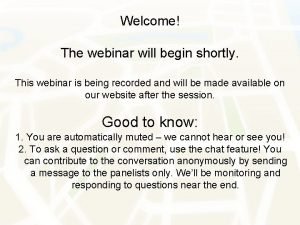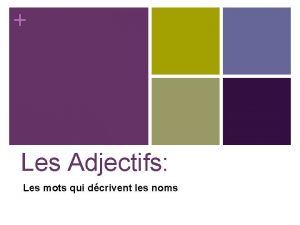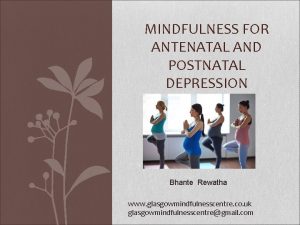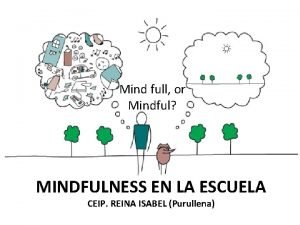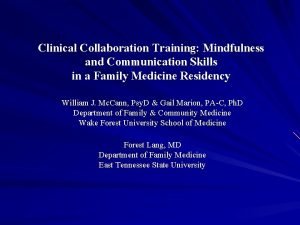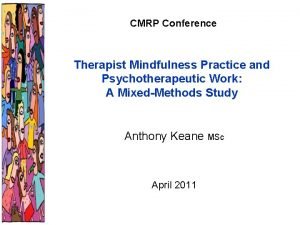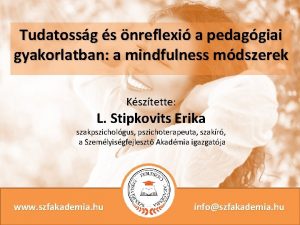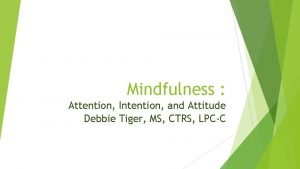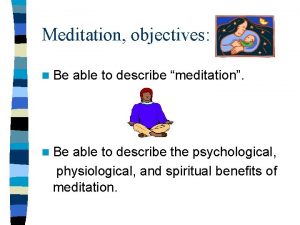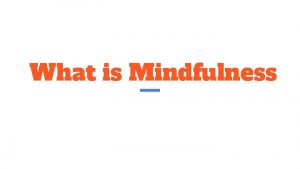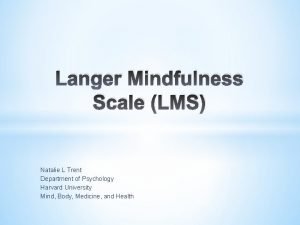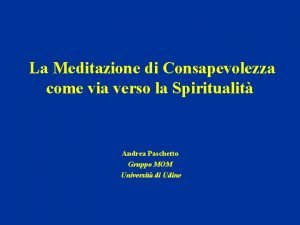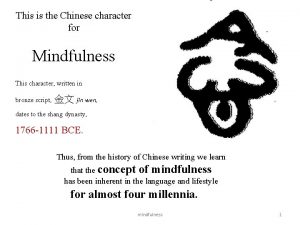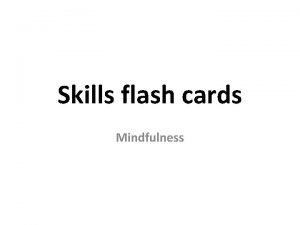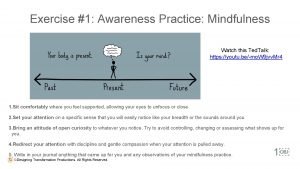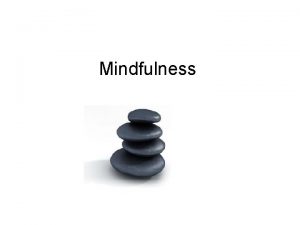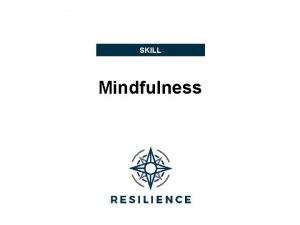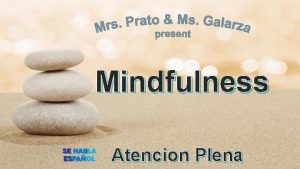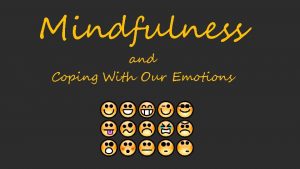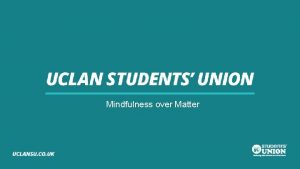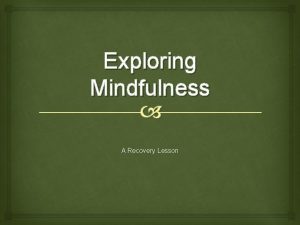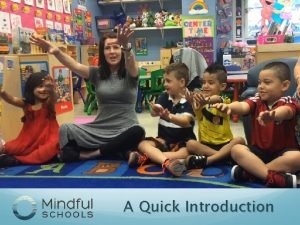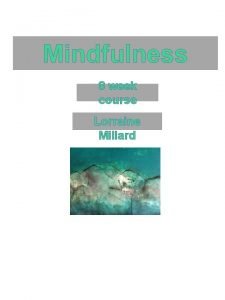Our Reconnector Session on MINDFULNESS will commence shortly



















- Slides: 19

Our Reconnector Session on MINDFULNESS will commence shortly.

Mindfulness & Guided Imagery

What is Mindfulness? • What is mindfulness? • What is guided imagery? • Why would we include mindfulness and guided imagery in our program? • What benefits do these practices have for people? • How do they work?

This workshop is based on the work of: Belleruth Naparstek • American psychotherapist, author and guided imagery pioneer with over 30 years experience • Chief of Consultation and Education at the Woodburn Centre for Community Mental Health (Fairfax County). Charlotte Reznick Associate Clinical Professor of Psychology at UCLA (University of California, Los Angeles) Best known for creating Imagery for Kids: Breakthrough for Learning, Creativity and Empowerment.

What is Mindfulness? • • • Mindfulness means paying attention with openness, curiosity and flexibility. Mindfulness is an established practice in the East, through traditions like meditation, yoga, martial arts and tai chi. It has also long been present in the Christian tradition. Western science has recently taken an interest in mindfulness and its health benefits, including: § reduced stress § increased self awareness § greater capacity to manage painful feelings

What is Guided Imagery? • Gentle but powerful technique that directs the imagination to a relaxed and focused state • Does not need to be lengthy but benefits come from practising frequently • Can be delivered by Companion reading a text or listening to a CD and may be accompanied by gentle music.

Guided Imagery Based on three principles: 1. The Mind-Body Connection – images can seem almost as real as the actual, external events. 2. The Altered State - attention is focused in the present on one thing and we have a decreased awareness of other things going on around us. 3. Locus of Control – feeling in control gives heightened optimism, self esteem and ability to tolerate pain, ambiguity and stress.

Guided Imagery Involves slowing the brainwaves “Beta” waking state … a “Theta” state …

Guided Imagery • Frequent practice may often lead to most effective outcomes. • Found to work well in a group setting. • Music can increase the effects of imagery. • Using same posture, gestures or hand positioning with each imaging session can create an “anchor” that may condition the participant to respond in future to the posture.

Guided Imagery What could happen? • Fall asleep • Tear up • Get runny nose • Cough • Yawn • Feel heaviness in limbs • Tingling in hands, feet or top of scalp • Involuntary muscle movements. These reactions are all entirely normal.

Guided Imagery Other indicators of a strong response to imagery are: • Unusual stillness • Increased colouring in the face • Relaxed facial muscles • Voice slower and more relaxed

https: //youtu. be/E 2 a. Wjl. Ge. Ty 8

Guided Imagery • Naparstek names 8 different kinds of guided imagery • We are focussing on ‘Feeling States Imagery’ because it is well suited for use with Seasons for Growth • It is based on the desire to elicit feelings of love, care, safety and gratitude, and minimise feelings of fear, anxiety, resentment and anger.

Six ways to practice Mindfulness: 1. Observe your breathing 2. Go for a nature walk 3. Take mini breaks throughout the day 4. Avoid doing too many things at once 5. Create a journal 6. Mindfulness apps for example Smiling Minds (Headspace)

Self Compassion Google: Loving kindness meditation https: //www. youtube. com/watch? v=sz 7 cp. V 7 ERs. M Think of yourself and say: May you be well May you be happy May you be peaceful May you be loved. 2. Then think of someone special to you and repeat the words. 3. Think of someone you don’t know well eg someone on the bus 4. Think of someone you are having difficulty with and say the words.

Mindfulness & Guided Imagery Review and Discussion • What is mindfulness? • Why would we include guided imagery in our programs? • What benefits does it have for people?

https: //www. youtube. com/watch? v=vo_VA NW 35 b 0&feature=youtu. be

Guided Imagery • Balloon breath • Experience of guided imagery

Mindfulness & Guided Imagery Resources Focusing (Revised 2 nd ed) Author: Eugene T Gendlin Planting Seeds: Practising Mindfulness with Children Author: Thich Nhat Hanh Still Quiet Place – Mindfulness for Young Children Author: Amy Saltzman MD
 Our program will begin shortly
Our program will begin shortly Commence-corporation
Commence-corporation Misclosure error in levelling
Misclosure error in levelling Une chaine alimentaire commence toujours par
Une chaine alimentaire commence toujours par Adjectif qualificatif en m
Adjectif qualificatif en m Brainpop precision and accuracy quiz answers
Brainpop precision and accuracy quiz answers Mbct
Mbct Mind full
Mind full Mindfulness for collaboration
Mindfulness for collaboration Mindfulness
Mindfulness Mindfulness gyerekeknek
Mindfulness gyerekeknek Miss attitude
Miss attitude Describe meditation
Describe meditation Mindfulness circle
Mindfulness circle Langer mindfulness scale
Langer mindfulness scale Meditazione mindfulness
Meditazione mindfulness Else bisseling
Else bisseling Chinese symbol for mindfulness
Chinese symbol for mindfulness Bodily sensations examples
Bodily sensations examples Mindfullness ted talk
Mindfullness ted talk
